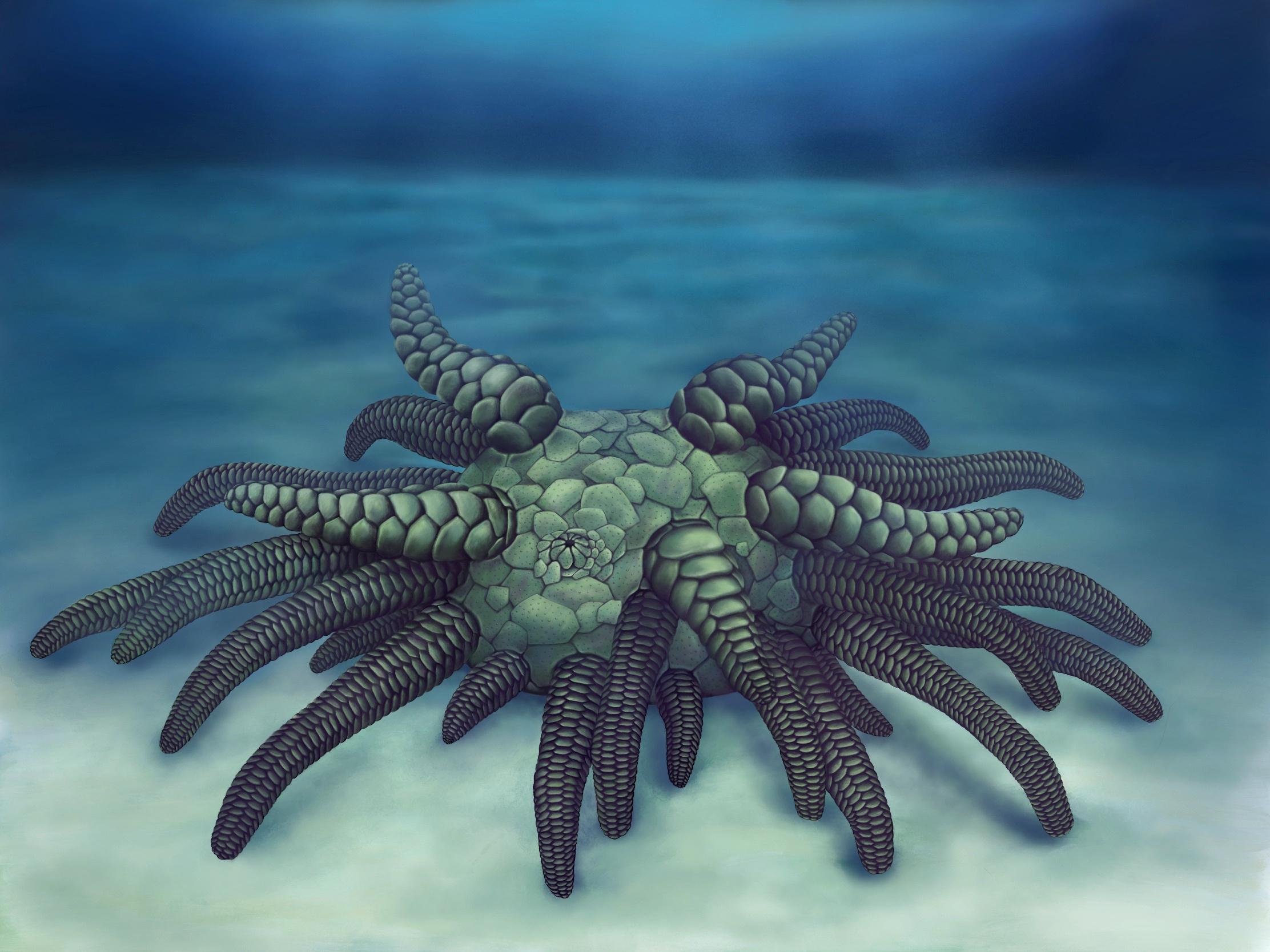‘Monstrous’ ancient fossil named after fictional Cthulu creature
Remains belong to ancient relative of sea urchins and sea cucumbers

Your support helps us to tell the story
From reproductive rights to climate change to Big Tech, The Independent is on the ground when the story is developing. Whether it's investigating the financials of Elon Musk's pro-Trump PAC or producing our latest documentary, 'The A Word', which shines a light on the American women fighting for reproductive rights, we know how important it is to parse out the facts from the messaging.
At such a critical moment in US history, we need reporters on the ground. Your donation allows us to keep sending journalists to speak to both sides of the story.
The Independent is trusted by Americans across the entire political spectrum. And unlike many other quality news outlets, we choose not to lock Americans out of our reporting and analysis with paywalls. We believe quality journalism should be available to everyone, paid for by those who can afford it.
Your support makes all the difference.An incredibly well-preserved fossil unearthed in Herefordshire has been named after a hideous creature from fiction: Sollasina cthulhu.
Although no larger than 3cm wide, its array of tentacles reminded the team who discovered it of the monster Cthulhu created by American author H.P. Lovecraft. A gigantic entity worshipped by cultists, the writer describes its appearance is described as looking like an octopus, a dragon, and a caricature of human form.
The fossil meanwhile, is thought to be a relative of tube-shaped sea cucumbers and spiny sea urchins still alive today. Scientists from both Oxford University and University College London said their “monstrous” new discovery provides new insights into the evolution of this group.
After grinding away at layer after layer of rock, they were able to create a digital reconstruction of the soft body preserved for 430 million years.
“We carried out a number of analyses to work out whether Sollasina was more closely related to sea cucumbers or sea urchins. To our surprise, the results suggest it was an ancient sea cucumber,” said Dr Jeffrey Thompson. “This helps us understand the changes that occurred during the early evolution of the group, which ultimately gave rise to the slug-like forms we see today.”
Publishing their findings in the journal Proceedings of the Royal Society B, the scientists said that like its descendants that still crawl along the ocean floor today, their specimen would have used its tentacles to shift itself around and catch food.
The excellent preservation of the creature’s soft tissues even captured elements of the hydraulic system that this group of animals use to manoeuvre themselves around.
“Sollasina belongs to an extinct group called the ophiocistioids, and this new material provides the first information on the group’s internal structures,” said Dr Imran Rahman from the University of Oxford, who led the study. “This includes an inner ring-like form that has never been described in the group before. We interpret this as the first evidence of the soft parts of the water vascular system in ophiocistioids.”
Within this system, modern starfish, sea cucumbers and sea urchins have a system of canals connecting their numerous tube feet. They then move by contracting muscles and forcing water around the canals.
Join our commenting forum
Join thought-provoking conversations, follow other Independent readers and see their replies
Comments